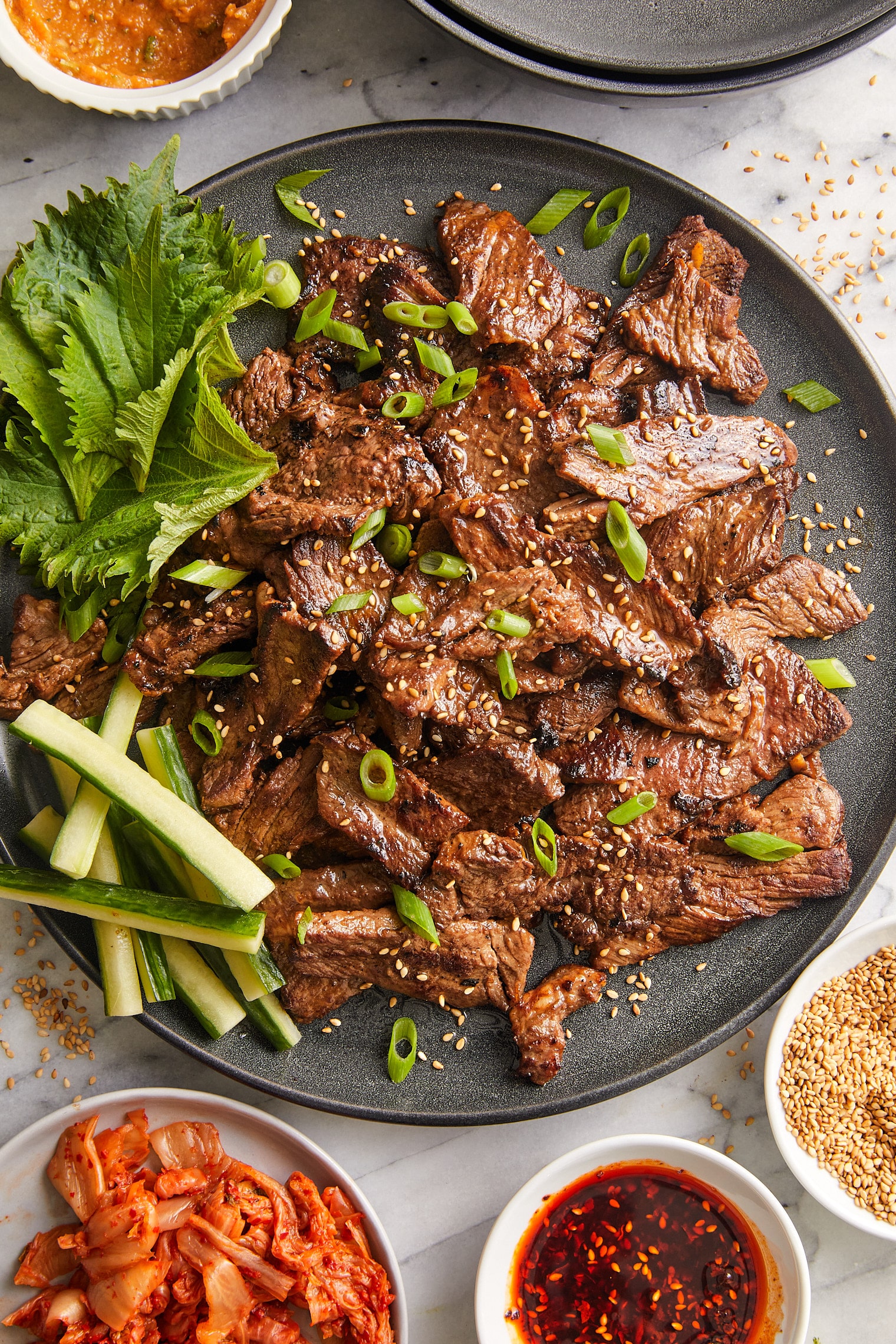Korean cuisine is renowned for its rich flavors, vibrant colors, and diverse array of dishes. Among these, one dish stands out for its irresistible taste and cultural significance: Korean Beef Bulgogi. This iconic dish, with its tender slices of marinated beef, offers a symphony of flavors that tantalize the taste buds and leave a lasting impression on anyone who tries it.
Origins and History
The origins of bulgogi can be traced back to ancient Korea, where it was first developed as a way to preserve meat. The name “bulgogi” itself translates to “fire meat,” reflecting its traditional method of cooking over an open flame. Over the centuries, bulgogi has evolved into a beloved staple of Korean cuisine, enjoyed by people both in Korea and around the world.
Ingredients and Preparation
At the heart of bulgogi is the quality of the beef and its marinade. Typically, thinly sliced beef, such as sirloin or ribeye, is marinated for hours in a mixture of soy sauce, sugar, sesame oil, garlic, and other seasonings. This marinade not only infuses the meat with flavor but also helps to tenderize it, resulting in succulent, melt-in-your-mouth goodness.
In addition to the marinade, bulgogi often incorporates a variety of vegetables, such as onions, carrots, and mushrooms, adding depth and texture to the dish. These ingredients are either marinated alongside the beef or stir-fried separately and then combined with the cooked meat.
Cooking Techniques
Traditionally, bulgogi is cooked on a grill or over an open flame, allowing the meat to caramelize and develop a delicious charred exterior while remaining juicy and tender on the inside. However, it can also be prepared using a stovetop skillet or a broiler, making it accessible to home cooks without outdoor grilling facilities.
One key technique in cooking bulgogi is to avoid overcrowding the pan or grill, allowing the meat to cook evenly and develop those coveted caramelized edges. It’s also important not to overcook the beef, as this can result in tough, chewy meat rather than the desired tender texture.
Serving and Presentation
Bulgogi is typically served with a variety of accompaniments, such as steamed rice, lettuce leaves for wrapping, and an assortment of side dishes known as banchan. Popular banchan choices include kimchi, pickled vegetables, and savory pancakes, which complement the flavors of the bulgogi and provide a well-rounded dining experience.
When serving bulgogi, presentation is key. The thinly sliced beef, glistening with marinade and caramelization, should be arranged attractively on a platter, garnished with sesame seeds and thinly sliced green onions for a pop of color and freshness. This attention to detail enhances not only the visual appeal of the dish but also the overall dining experience.
Cultural Significance
Beyond its culinary appeal, bulgogi holds a special place in Korean culture as a dish often shared with loved ones during gatherings and celebrations. Its communal nature fosters a sense of connection and togetherness, as friends and family come together to enjoy good food and good company.
Moreover, bulgogi has gained popularity on the global stage, thanks to the rise of Korean pop culture and the growing interest in international cuisine. Today, you can find bulgogi on the menus of Korean restaurants worldwide, as well as in home kitchens where adventurous cooks seek to recreate its authentic flavors.
In Conclusion
Korean Beef Bulgogi is more than just a dish – it’s a culinary masterpiece that embodies the essence of Korean cuisine. With its tender, flavorful meat and harmonious blend of seasonings, bulgogi captivates the senses and leaves a lasting impression on anyone fortunate enough to taste it. Whether enjoyed in a bustling restaurant in Seoul or cooked up at home with friends and family, bulgogi is a true celebration of food, culture, and community.



